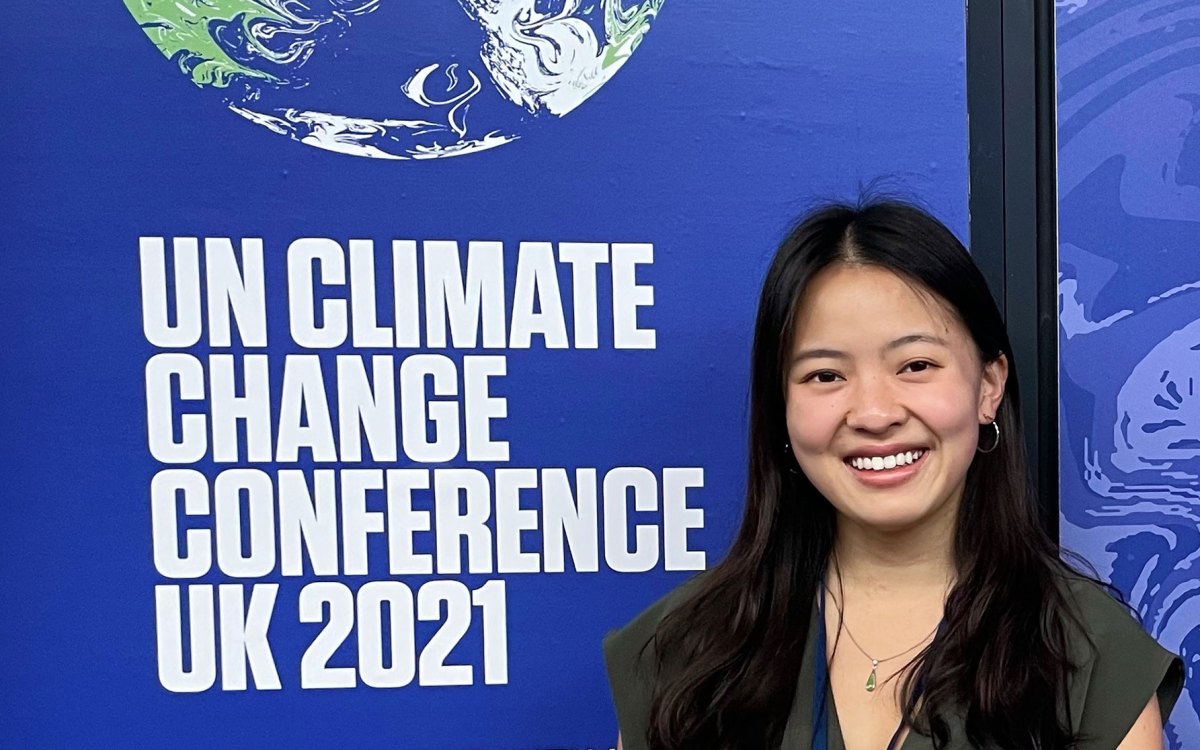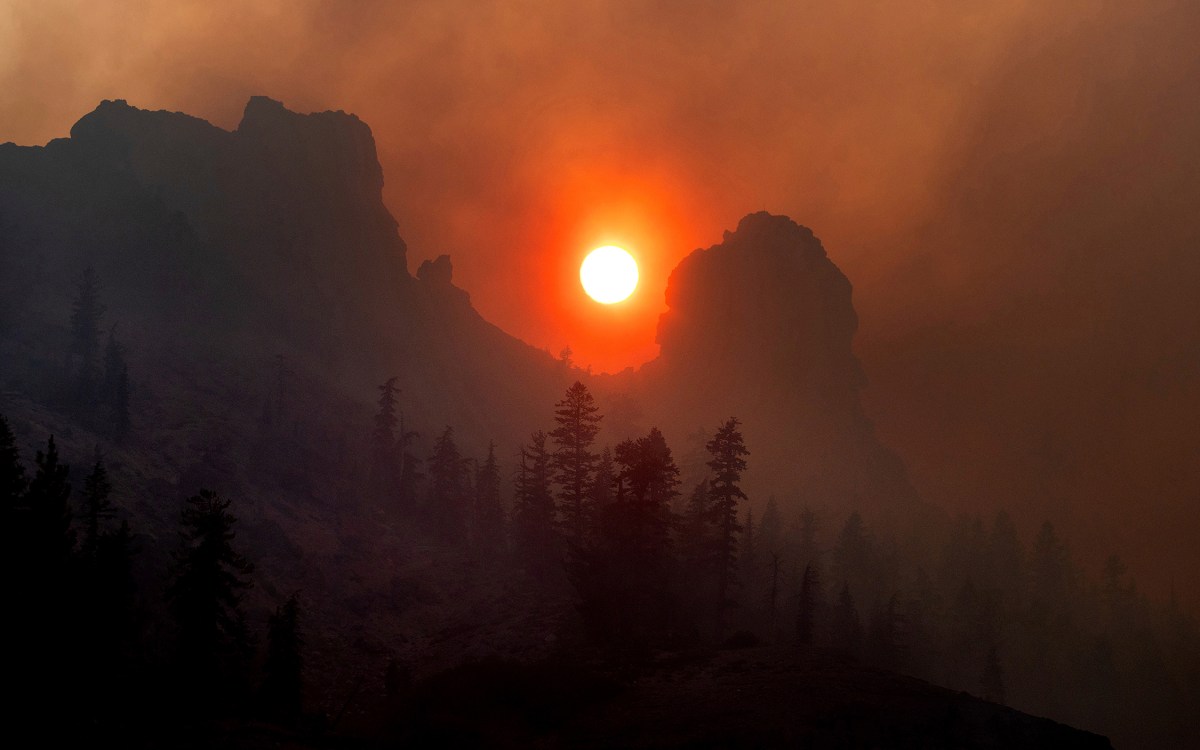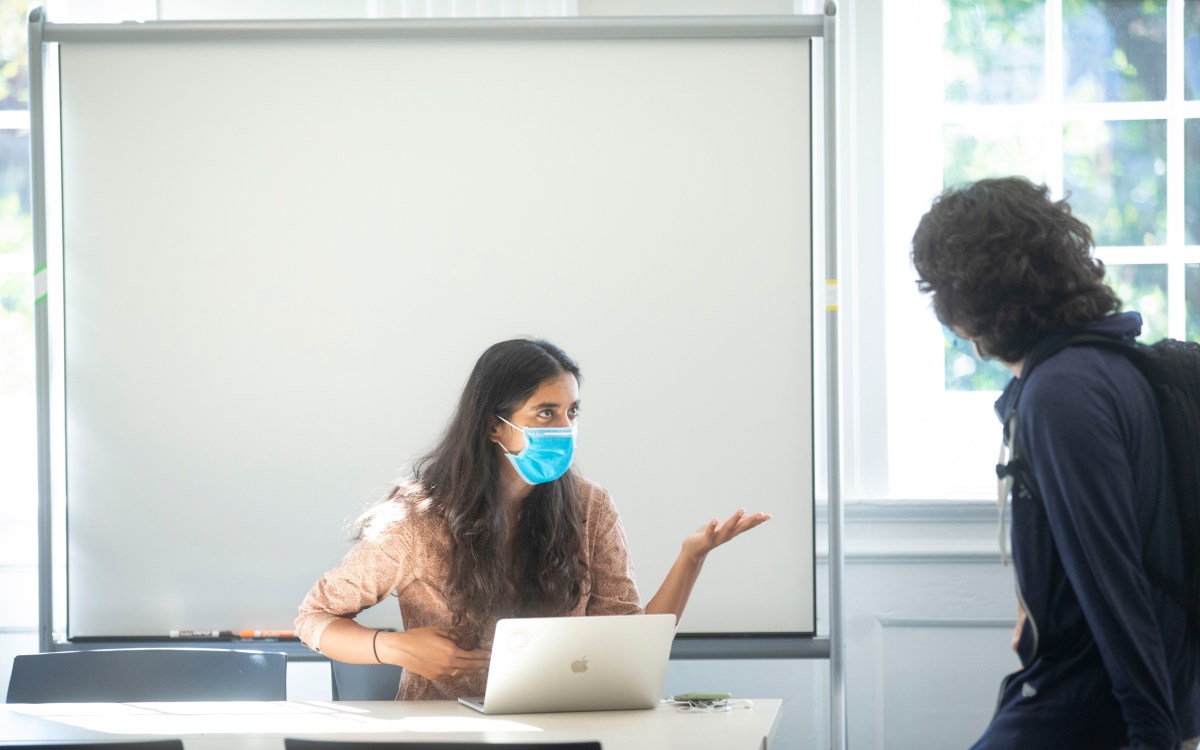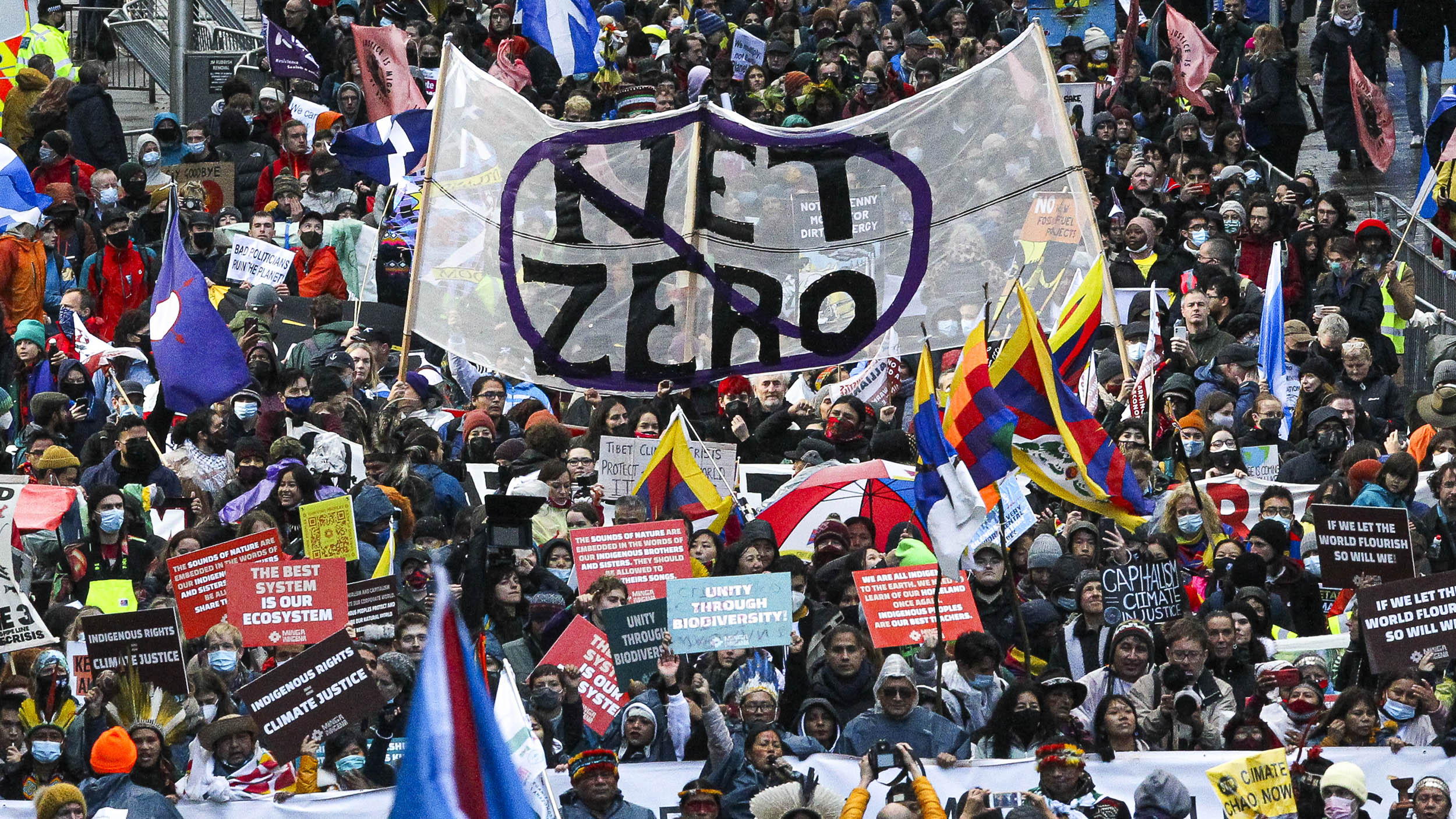
Thousands march in Glasgow during COP26 to demand greater action and accountability from politicians on climate change.
Ewan Bootman/AP
After world leaders depart, hard talks begin at COP26
Pledges and coalitions, mitigation and adaptation, taking to the streets and fringe music fests as conference winds down
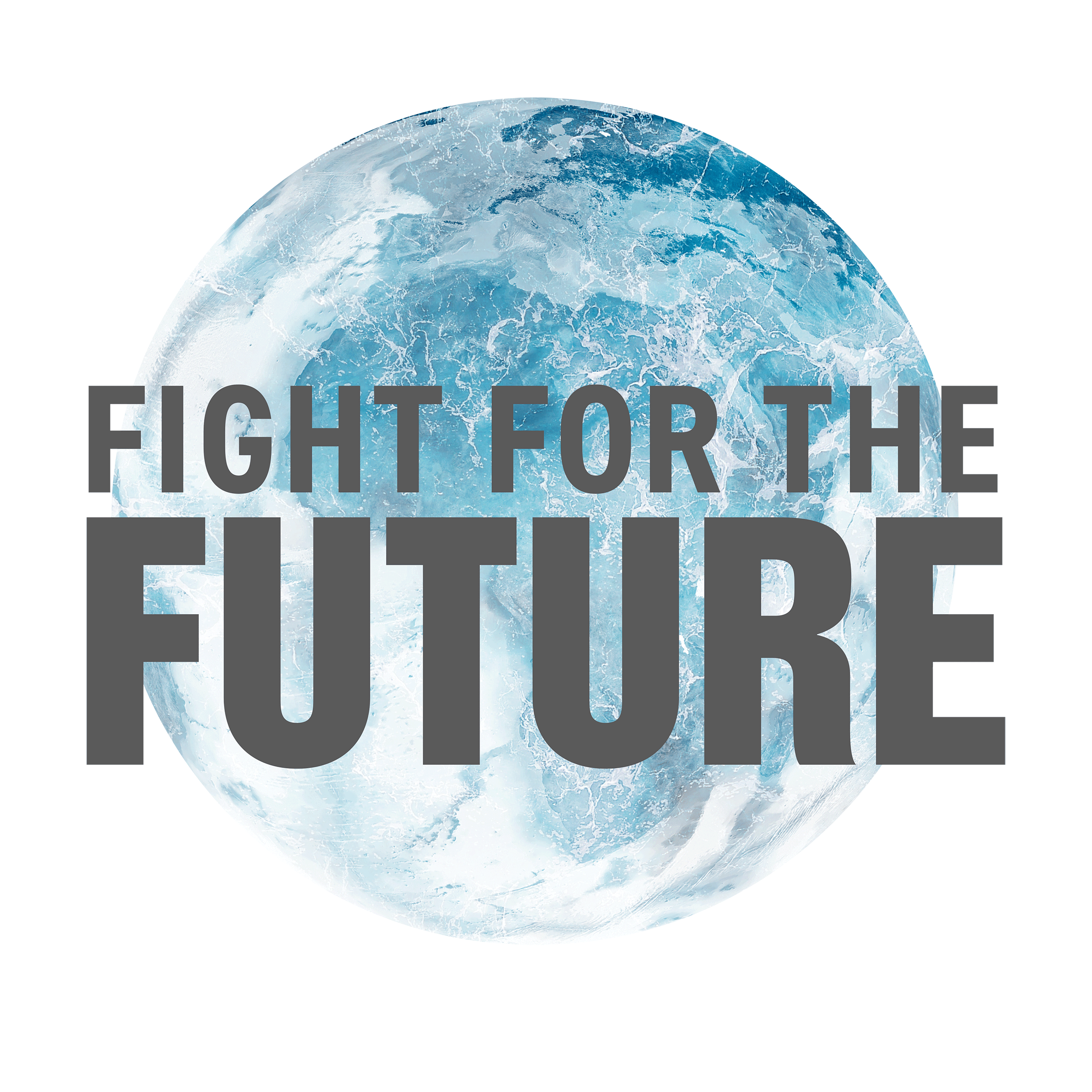
COP26 showed me the beauty of seeing a whole city come together in a shared mission of achieving a sustainable future. Due to the extreme shortage of accommodations in Glasgow, local Scots opened up their homes to host delegates from around the world. My hosts showed me true Scottish warmth and hospitality, with evening games of Rummikub over homemade blueberry sorbet, samplings of classic Scotch whiskey, and playtime with their 18-month-old.
In the conference halls, fanfare had shifted to frustration as world leaders departed the city after the third day of COP26, leaving their negotiators to navigate the difficult back-and-forths over how exactly the world would “keep 1.5C alive,” the global warming goal set by the Paris agreement.
MORE FROM GLASGOW
While there were many promising pledges and coalitions formed around ending deforestation, reducing methane emissions, and ending public financing of overseas fossil-fuel projects, the questions of accountability and transparency were continuously emphasized both inside and outside of the conference.
At the Presidency’s dialogue with the Local Communities and Indigenous People Platform, Indigenous leaders from across the globe highlighted the reality that even though Indigenous Peoples and Local Communities conserve and steward almost half of the world’s land mass and 80 percent of its biodiversity, they received less than 1 percent of the foreign assistance funds spent for climate mitigation and adaptation over the last 10 years. Yet drawing upon the wealth of Indigenous knowledge to build resilience would be essential to creating long-term climate solutions.
A landmark announcement had been made the previous day by a coalition of governments and stakeholders to commit $1.7 billion of financing from 2021 to 2025 to support IPLC-led climate solutions. This positive step was accompanied by questions of what mechanisms would ensure Indigenous people get direct access to these funds and how actions would actually reach communities. There was a powerful consensus about the need to “sit together and build together as partners, not just recipients.”
This year, the focus on adaptation was more prominent than ever due to the escalating impacts of climate change, elevating adaptation to the same level as mitigation. The U.S. Center hosted a panel featuring Gina McCarthy, the White House’s national climate adviser; John Kerry, special presidential envoy for climate; and Samantha Power, administrator of the United States Agency for International Development, discussing advancing adaptation efforts in the U.S. and in vulnerable countries.
Power, who had taught one of my classes at Harvard last year (she’s currently on public-service leave from the University), stressed the importance of shifting beyond piloting initiatives to actually institutionalizing them with the communities that are on the front lines. Both McCarthy and Kerry emphasized how adaptation is deeply local-specific, meaning tailoring strategies to meet the particular needs of individual areas is far more effective than a cookie-cutter approach. “Think global, act local” is an integral part of climate action, but this demonstrated to me that thinking locally and acting globally is equally important in driving meaningful change. Harnessing the energy of youth and community movements to craft a political coalition with thoughtful policies and technological innovation will be indispensable in both mitigation and adaptation.
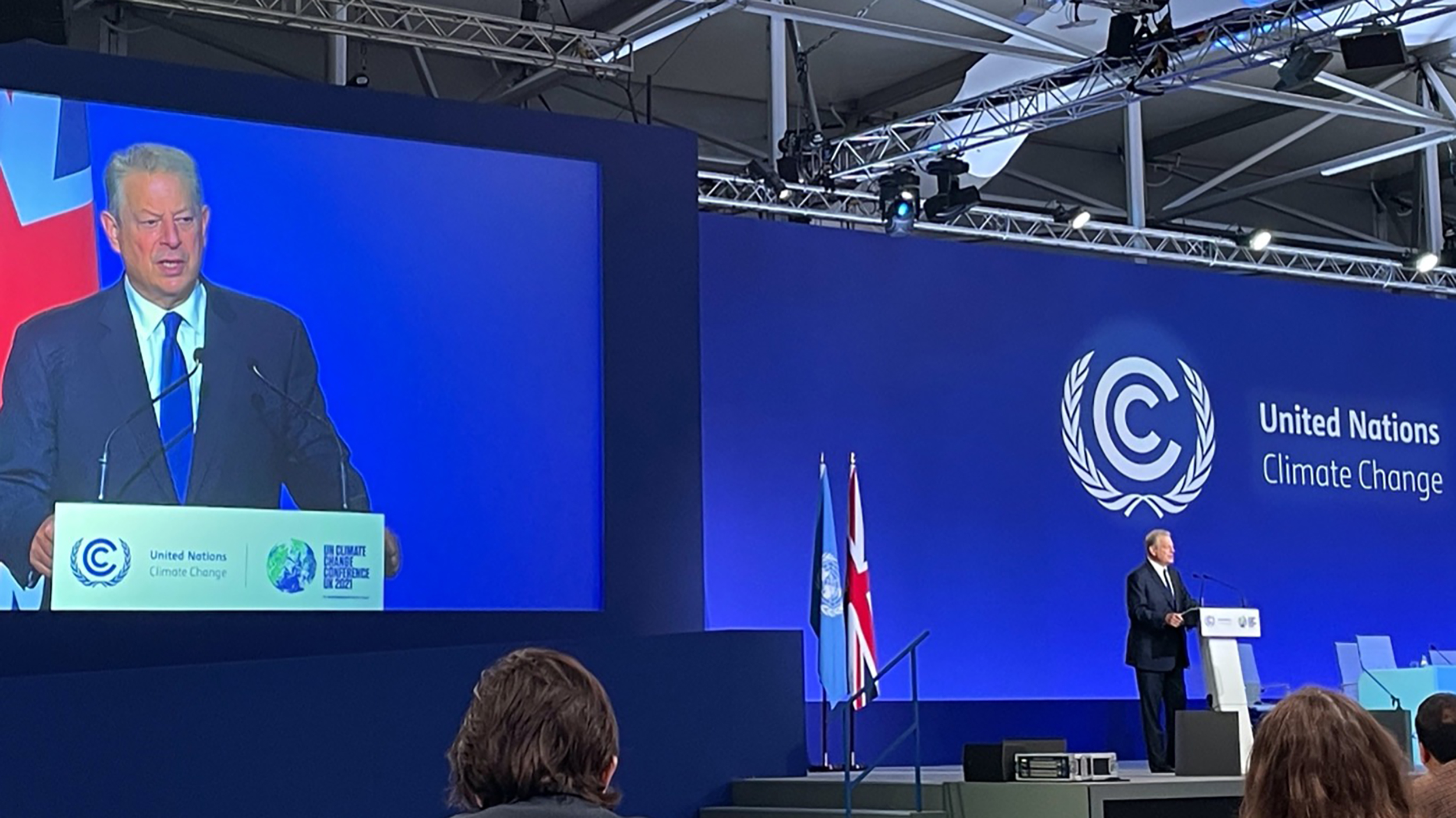
Former Vice President Al Gore speaking at the COP26.
Photo by Emilly Fan
During an inspiring call to action, former Vice President Al Gore pronounced that “political will is itself a renewable resource.” This was reinforced the very next day on the Global Day of Action for Climate Justice, which coincided with the conference’s halfway mark. Taking an afternoon away from the conference, I joined the tens of thousands of people — Greta Thunberg included — who took to the streets of Glasgow to demand greater action and accountability from politicians on climate change. Despite heavy winds and rain, it was invigorating to be surrounded by the tangible passion and energy of people of all ages and backgrounds, showing our solidarity.
What is often less well-known about COPs are the thousands of events that happen outside of the summit venue itself. I was fortunate to participate in a special reception co-hosted by Music4ClimateJustice, Blue Planet Alliance, and EarthX that included talks, film screenings, art exhibits, and presentations. And my final evening in Glasgow was capped off by breathtaking live music as part of a COP26 fringe festival, which focused on the intersection of culture and climate and explored how music and entertainment can play a role in the fight against climate change. Hosted by the UMA Entertainment Group, the not-for-profit concert was headlined by Aurora, along with performances by Sam Fischer and Nick Mulvey. Given that climate change will affect every aspect of life for everyone, everywhere, it is crucial for the issue to be explored not just through political, economic, and scientific lenses but also cultural ones.
COP26 was an eye-opening experience that demonstrated to me the importance of maintaining a balance between promoting ground-level environmental justice while advancing high-level institutional change across sectors. As the conference comes to an end, the world outside of the negotiating rooms waits in anticipation to see the final outcomes.
I would like to express my sincere gratitude to the Harvard Project on Climate Agreements and Foundation Environment ‒ Law Society for making this unforgettable trip possible.



